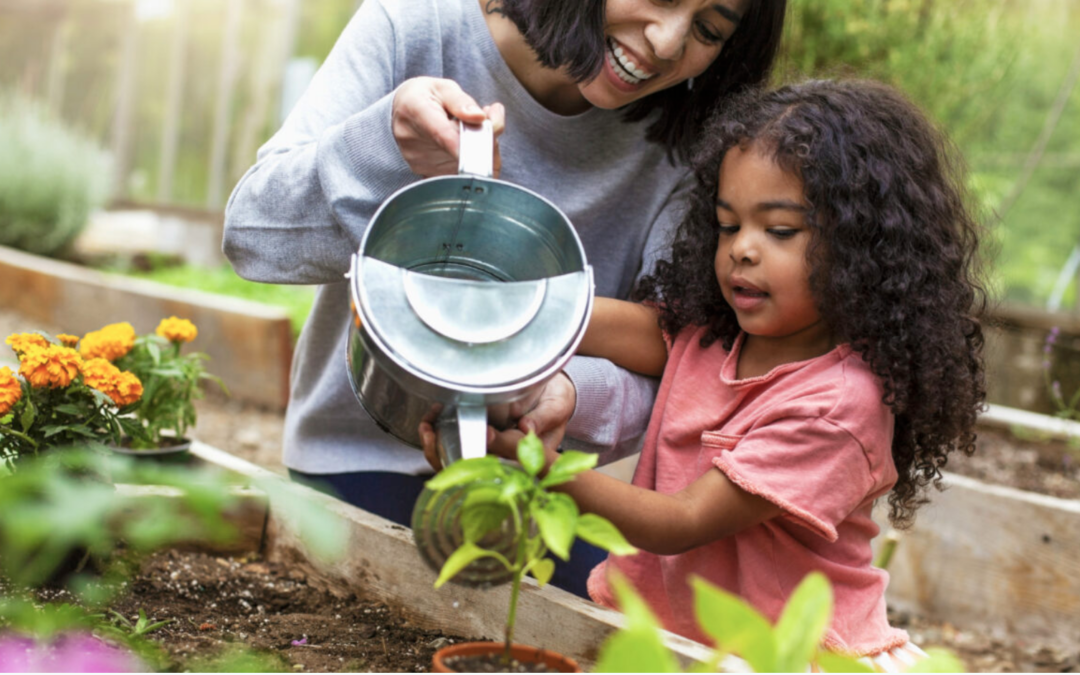Gardening is an incredible activity that not only nurtures plants but also fosters a deep connection with nature. When you involve young children in the gardening process, it becomes a delightful and educational experience for them. Gardening offers numerous benefits, including teaching them about responsibility, patience, and the cycle of life. If you’re looking for ways to engage your little ones in gardening, here are 6 great ideas that will make it an enjoyable and memorable adventure!
- Create a Sensory Garden: Designate a special corner of your garden for sensory experiences. Encourage your children to plant fragrant flowers, herbs, and plants with different textures. Let them feel the velvety petals of a rose, sniff aromatic herbs, and explore plants that make interesting sounds when touched. This sensory journey will awaken their senses and deepen their appreciation for nature’s diversity.
- Build a Fairy Garden: Spark your children’s imagination by creating a magical fairy garden. Designate a small area and provide miniature plants, tiny figurines, and whimsical decorations. Let their creativity run wild as they design the garden, making it a tiny haven for fairies and other magical creatures. This activity encourages imaginative play and instills a love for the natural world.
- Start a Butterfly Habitat: Introduce your children to the captivating world of butterflies by planting a butterfly-friendly garden. Research and choose nectar-rich plants that attract butterflies, like milkweed, coneflowers, and lavender. Observe the transformation from caterpillar to butterfly and witness the beauty of nature up close. This experience will foster a sense of wonder and appreciation for the delicate balance of ecosystems.
- Grow a Bean Teepee: Construct a bean teepee using long bamboo poles or sturdy branches and twine. Plant climbing beans around the structure, and as they grow, they will form a cozy hideaway. Encourage your children to decorate the teepee with colorful ribbons or wind chimes. This living fort will provide shade, a cozy reading nook, and a sense of accomplishment as they witness their green hideout come to life.
- Create a Sunflower House: Plant a circle of sunflowers, leaving a space for an entrance. As the sunflowers grow tall, they will create a natural playhouse filled with golden blooms. Encourage your children to decorate the inside with handmade crafts or play games in the sunflower sanctuary. This activity stimulates their creativity, provides shade, and instills a love for gardening.
- Start a Worm Composting Bin: Teach your children about the importance of composting and recycling by starting a worm bin. Provide a container with a tight-fitting lid, bedding made of shredded newspaper, and introduce some earthworms. Let your children feed the worms with fruit and vegetable scraps, turning them into nutrient-rich compost for the garden.

